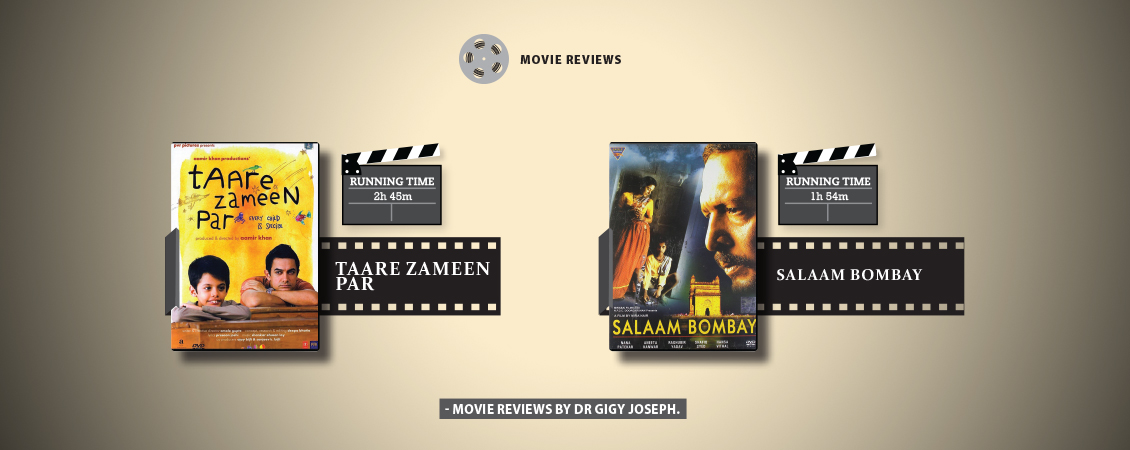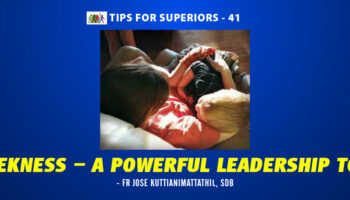Taare Zameen Par
Director/producer: Aamir Khan; Writer: Amole Gupte; Cast: Aamir Khan, Darsheel Safary, Sachet Engineer, Tisca Chopra, Vipin Sharma; Run time:165 minutes. 2007.
The film addresses a usually ignored problem in schools. It tells the story of a dyslexic child who faces misunderstanding and ill treatment from parents and teachers on account of his reading disability. His redemption starts when an understanding teacher steps into his life.
The dyslexic Ishaan Awasthi is an otherwise normal schoolboy of eight. His elder brother excels in studies. Ishaan’s teachers and parents fail to identify his problem and treat him as lazy and truant. In school he is the butt of laughter and ill-treatment. His parents shift him to a boarding school in hope of ‘disciplining’ him. But it only makes matters worse. Lonely and homesick in the new school, Ishaan becomes introverted and withdrawn.
Into his troubled world comes the new arts teacher Ram Shankar Nikumbh. Nikumbh identifies the little boy’s problem and helps him out of his shell. Ishaan is talented in painting. He has a great feel for nature and animals and is highly imaginative. This becomes his winning point and the arts teacher is able to convince his parents about this. The climax of the movie is when Ishaan comes out winner in a school painting competition. His parents are relieved and overjoyed to see their son in a new light. The movie is a heart-warming experience, enhanced by Shankar Mahadevan’s musical score and some fine graphic animation that evokes the fantasy world of a child. It is a lesson in empathy for marginalised children, an inspiration for teachers and parents everywhere. As its subtitle says: “Every child is special.”
——————————————————————————————————————————————————————————
Salaam Bombay
Director: Mira Nair. Cast: Shafiq Syed, Hansa Vithal, Chanda Sharma, Raghuvir Yadav, Anita Kanwar, Nana Patekar, Irrfan Khan. 113 minutes, 1983.
The film’s narrative centres on Krishna, a little boy who is sent out of his house by his mother for setting fire to his elder brother’s motorbike. He has to earn Rs 500 to repay his brother for the damages. He works in a circus. One day, when he is on errands, the circus leaves. The little destitute arrives in Mumbai, where street boys rob everything he has. But he soon makes friends with them, especially with Chillum, who finds work for him as a tea-carrier in a red-light district. Chillum is a drug-addict enslaved by Baba, the drug-dealer whose wife is a prostitute. Baba’s wife is frustrated by the thought of bringing up their only daughter in such situation. But Baba is unwilling to take them elsewhere. Krishna develops a crush on a new girl named Sola Saal at the brothel. He supports her in resisting her initiation into prostitution, and tries to rescue her by setting fire to the house. They are caught. He is beaten up and fired from his job. The madam of the house asks Baba to ‘break’ Sola Saal into her ‘work.’ Krishna does all kinds of menial jobs to earn money to support himself and the hopelessly addicted Chillum, including a burglary. Chillum steals Krishna’s money and overdoses himself to death. One night Krishna and Baba’s daughter are taken by the police and put in a juvenile home. The boy escapes to return to the street. Krishna’s hope of eloping with Sola Saal are dashed when she tells him that she is charmed by Baba and does not care about Krishna and moves off to meet her first “client.” The enraged boy kills Baba and tries to run away with Baba’s wife. They get separated in a procession. The movie was developed from the actual experiences of Mumbai street children. The filming was done entirely on location. It throws light on the conditions of life lived literally in the streets of Indian cities, and the inadequacy and casual cruelty of social institutions meant to help the people living on the edge. We also see the dignity and resilience of people who are treated as “non-persons.”

To subscribe to the magazine Contact Us





